As far as kitchen seasonings go, sweetly aromatic bay leaves are definitely a background player. But, they still play an important supporting role in many global cuisines and delicious recipes.
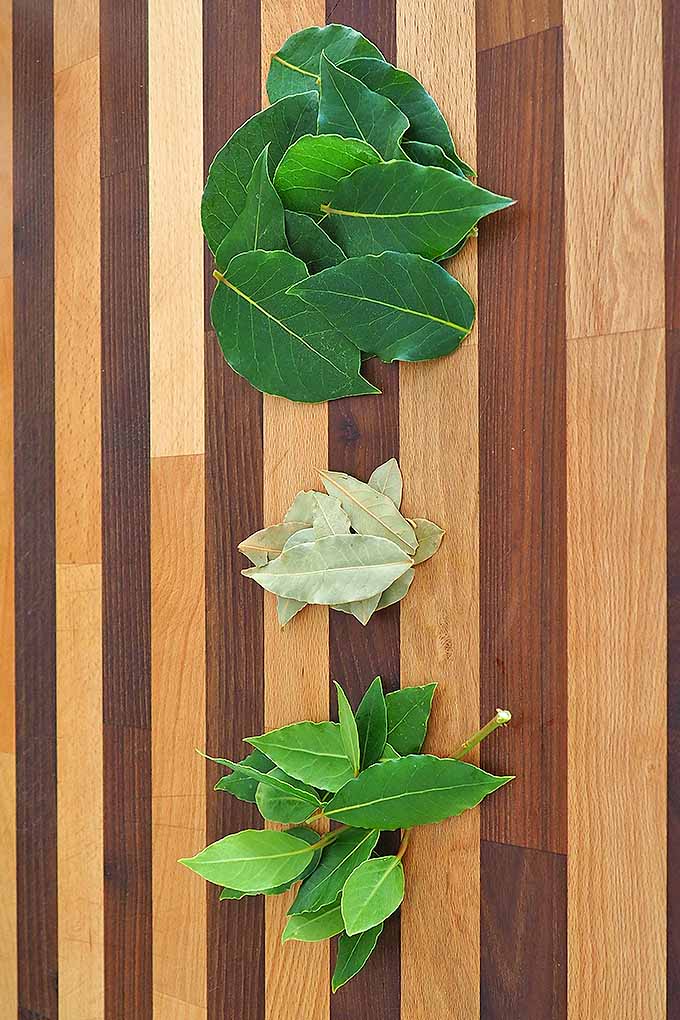
You’re probably familiar with their use in soups, stews, and other long-cooking dishes, but they have many more applications as well.
With a subtle, refined flavor, they might not be immediately recognizable like more familiar herbs such as oregano or parsley. But it’s well worth getting to know this unassuming herb.
Join us now for an in-depth look at the aromatic bay leaf. We’re dishing on whether it should be used fresh or dried, the real reason the leaves should be discarded before serving, storage tips, and how to use them in a variety of dishes.
The Kitchen Laureate
The common variety of bay leaf is the dried herb found in the spice section of your grocery store. This is the perennial, woody shrub Laurus nobilis, an herb from the Lauraceae, or laurel family. It is often referred to as sweet, Mediterranean, or Turkish bay, and sweet or true laurel.
Native to the Mediterranean Basin, L. nobilis was one of the first herbs to be commercially traded and quickly become a staple in several regional cuisines.
Used extensively in the areas of the Mediterranean, the Middle East, India, and Europe, it’s also an ingredient frequently used in French cooking, particularly the well-known bouquet garni.
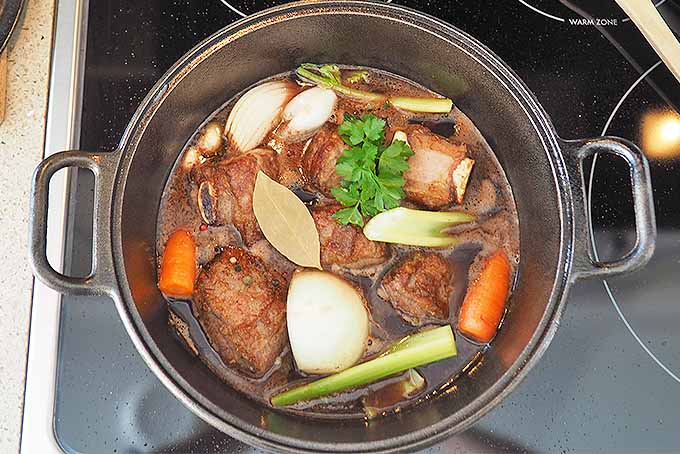
Most often used in slow-simmered dishes such as soups, stews, and braises, a long cooking time draws out both the delicate flavor and woodsy, almost tea-like aroma.
However, they’re also well-suited for use in poaching liquids, with fish and poultry, in sauces, risottos, and to flavor sausages, pate, pickles, and vinegars. All they need to release their herbal flavor is a bit of liquid to infuse the leaves, and steady heat.
The wood of L. nobilis is sometimes added to smokers and barbecue grills to add rich flavoring, particularly when cooking dishes like ribs or jerk chicken.
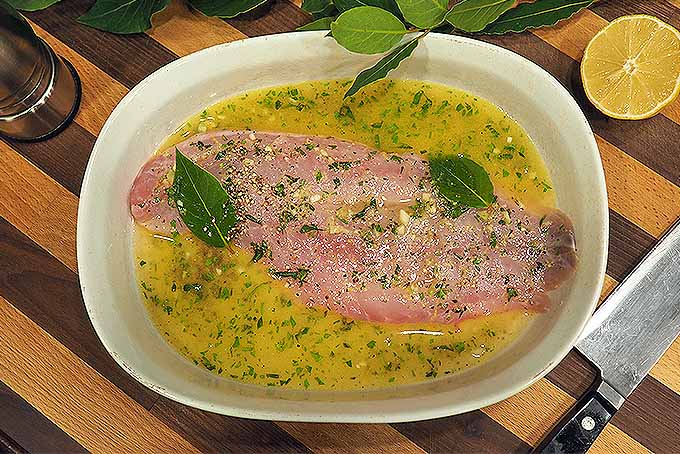
Unlike tender, leafy herbs that quickly lose flavor when dried, bay is one the few herbs that dries well – with flavors that develop and intensify over several weeks after picking.
This is due to the tough, leathery texture of their greenery, which is designed to retain aromatic compounds against the intense sunshine of their original habitat.
And what about fresh bay leaves? Well, this is a bit controversial.
Beware the Fresh Imposter
When used fresh, L. nobilis has a mild, slightly astringent flavor with a hint of eucalyptus and light floral notes, which makes it well suited to balance flavors in dishes that cook more quickly.
However, in North America, the product most often sold in grocery stores and at farmers markets as fresh bay leaf is in fact Umbellularia californica, or California bay. And while it is a member of the Lauraceae family, it’s a completely different genus.

The flavor of U. californica is noticeably different as well. It has a sharp, deeply astringent, and intensely mentholated flavor. It will clear your sinuses nicely, but this intensity also makes it unsuitable for cooking – unless you’re whipping up a batch of cough drops!
Exactly why this is sold as true laurel leaf is baffling, because L. nobilis is an easily cultivated shrub that’s also fast growing.
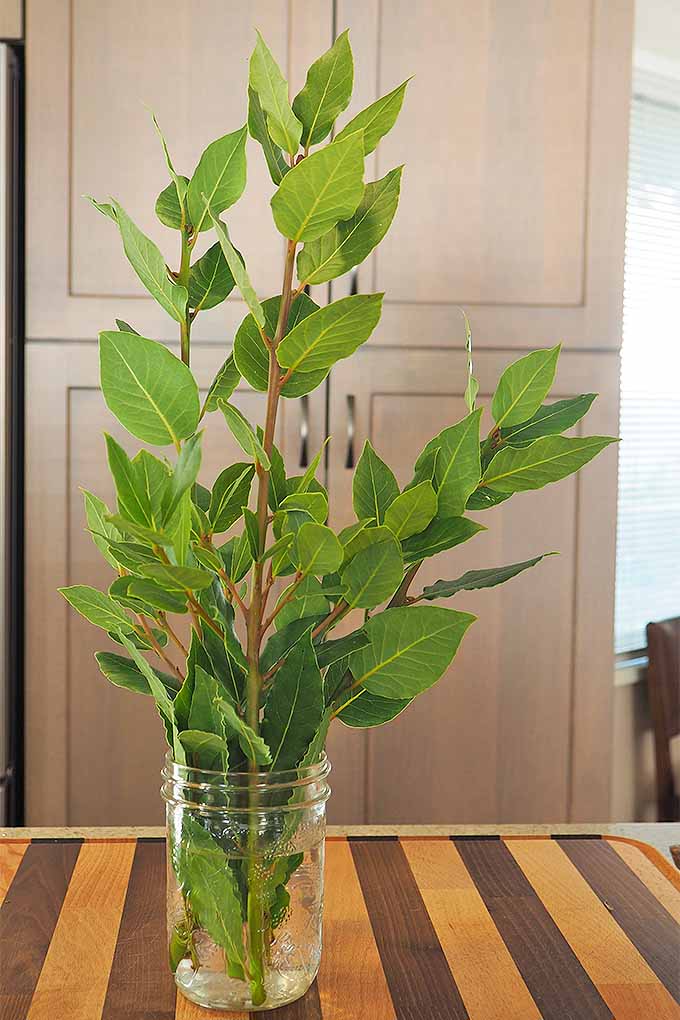
So, while I personally use and recommend authentic fresh bay for cooking, using the fresh California variety is not a good idea. And, unfortunately, finding fresh true laurel is difficult unless you grow your own – which I also recommend!
But, if you can find fresh true bay, its mild flavor is suited to a variety of dishes. It’s a natural for roasted poultry, for poaching fish or fish en papillote, in sauces, pastas, with roasted or steamed vegetables, a pot of rice, and risotto.
But the bottom line is, unless you can be sure of getting the real deal, stick with the dried herb, either in whole or ground form.
Whole, Crushed, or Ground?
No doubt you’ve heard that the whole leaves should be removed from your dish before serving.
However, this isn’t due to the popular belief that they’re toxic, as are some similar looking members of the laurel family.
No, the reason for their removal is because they remain rigid even after hours of cooking, and the dried herb has sharp edges – this means that swallowing them whole or in large pieces can cause abrasions to the throat and digestive tract! And at the very least, the texture of these leaves isn’t pleasant on the tongue.
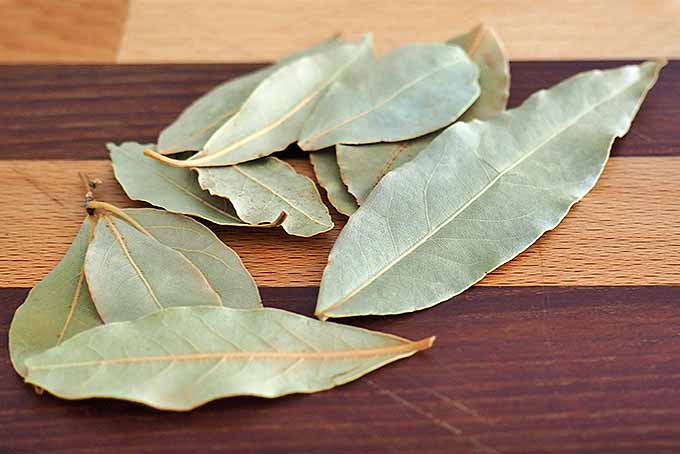
Of course, they can be used crushed. But in this form, they should be placed in a tea infuser or cheesecloth sack before adding to the pot.
The ground herb is another good option, but the flavor is markedly stronger than it will be if you’re using them whole, so discernment is needed when adding to a dish.
But, before you get too keen on carefully removing this tasty herb before serving, you’ll want to read the following info.
Kiss the Cook
There’s a new twist on a couple of old traditions that’s gaining popularity with this herb.
Combining the old Italian adage that “he who arrives late must kiss the cook,” and the English tradition of mixing a lucky coin into the Christmas pudding, those that find a bay leaf in their dish in today’s dining rooms must kiss the cook.
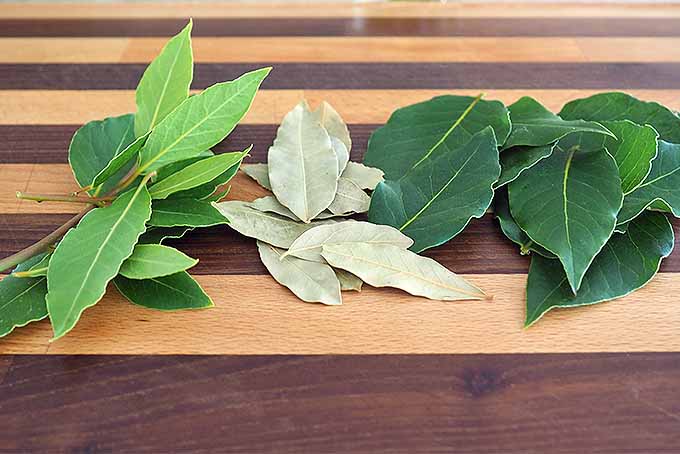
Sounds good to me! I think I’ll start planting some bay leaves… But let your guests know to be looking for them – we wouldn’t want any accidental consumption!
Storage
As mentioned, sweet bay dries well and will remain flavorful for up to one year when stored in an airtight container in a cool, dry cupboard on your spice rack.
And if you grow your own, or have access to fresh supplies, they freeze well too.
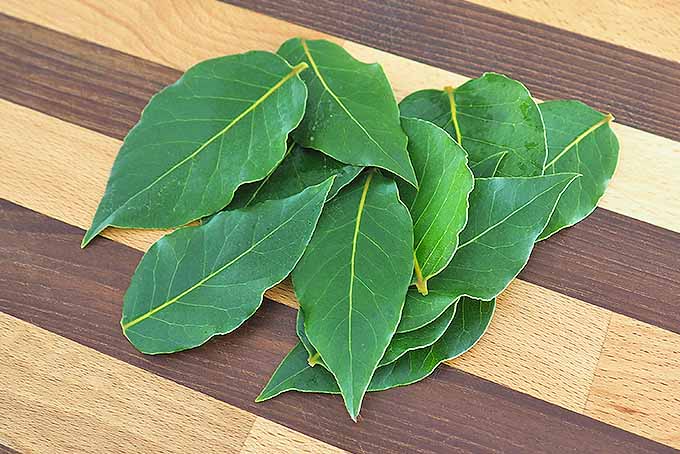
To freeze, rinse under cool, running water and allow to air dry, then snip from the stem. Layer in a zip-top bag and squeeze out any excess air before sealing and freezing, where they’ll remain viable for 12 to 18 months.
Nutrition and Other Uses
Sweet laurel is also revered by herbalists. It’s used extensively in aromatherapy, has various therapeutic uses, and is even the source of some familiar words and adages.
Plus, bay is symbolic of victory and achievement – garlands of this evergreen herb have inspired Olympians since the seventh century, crowned biblical figures, and were favored by Roman emperors to show their divine lineage.
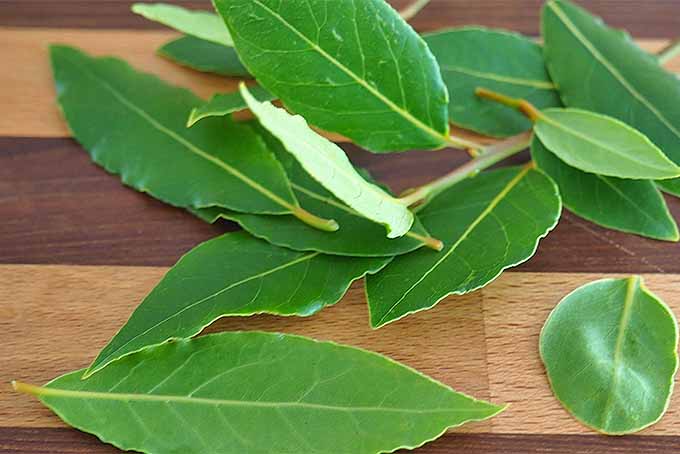
L. nobilis offers several nutrients, including high levels of vitamins A, B-6, and C, calcium, iron, and magnesium. It is rich in eucalyptol plus several other essential oils and flavonoids.
Its oil has many therapeutic applications, with some studies showing a significant reduction of blood glucose levels, low density lipoprotein (LDL) cholesterol, and triglycerides.
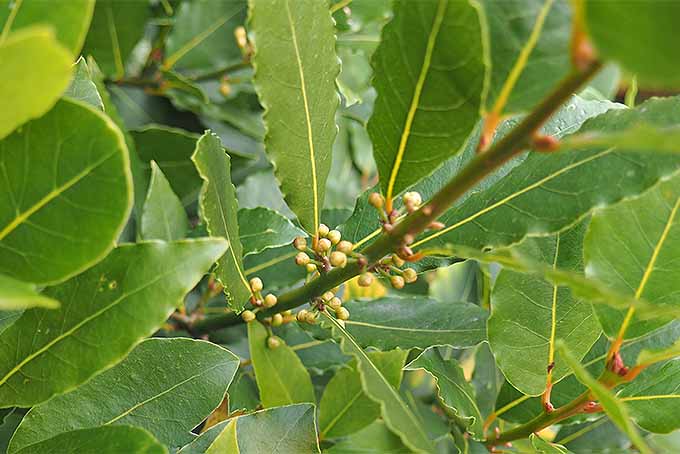
It’s also used in dentistry, and is used holistically as an immune booster, to promote skin health, to soothe stomach problems, and for the treatment of arthritis, bronchitis, and muscle pain.
And thanks to its high lauric acid content, sweet laurel is effective as an insect repellent!
Resting on One’s Laurels
While the sweet laurel might play second fiddle to other more strident herbs, its accomplished flavor adds a lovely, nuanced taste to many familiar dishes.
Add dried whole leaves to long-simmering dishes, and use fresh ones in dishes that cook more quickly – as long as you know it’s the true L. nobilis!

If you do want to crumble them, make sure they’re encased in muslin or a tea strainer for cooking, and always remove whole leaves before serving.
Do you folks have questions about bay leaves, or favorite recipes that use their sweet, herbal flavor? Drop us a line in the comments below, and be sure to check our other articles on cooking with herbs like basil and tarragon!
Don’t forget to Pin It!
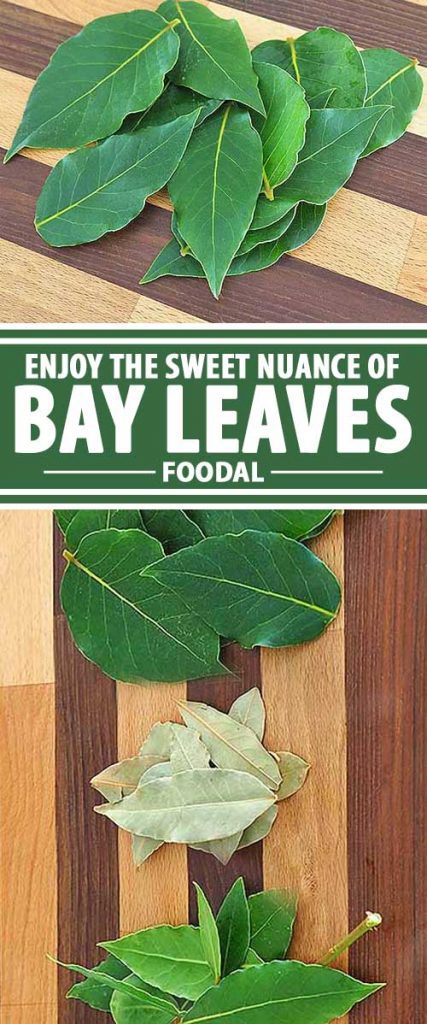
Photos by Lorna Kring, © Ask the Experts, LLC. ALL RIGHTS RESERVED.See our TOS for more details.
The staff at Foodal are not medical professionals and this article should not be construed as medical advice. Foodal and Ask the Experts, LLC assume no liability for the use or misuse of the material presented above. Always consult with a medical professional before changing your diet, or using supplements or manufactured or natural medications.
About Lorna Kring
Recently retired as a costume specialist in the TV and film industry, Lorna now enjoys blogging on contemporary lifestyle themes. A bit daft about the garden, she’s particularly obsessed with organic tomatoes and herbs, and delights in breaking bread with family and friends.

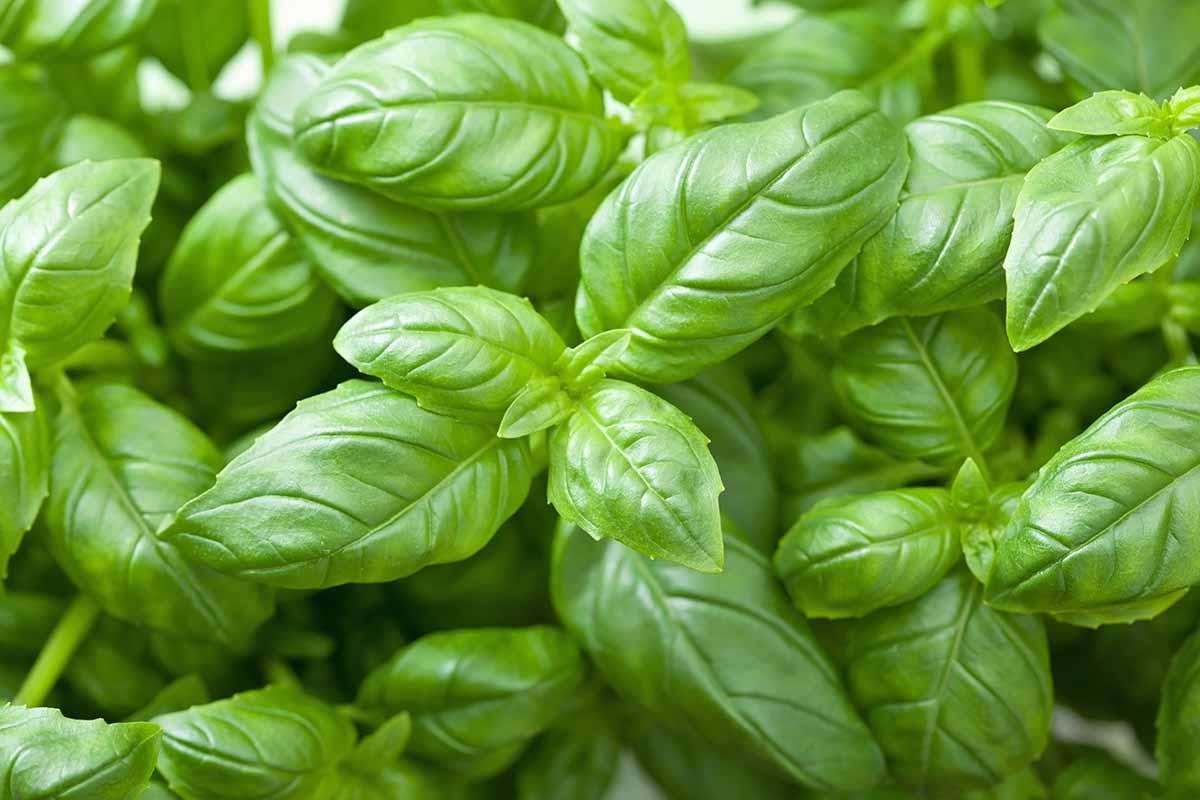

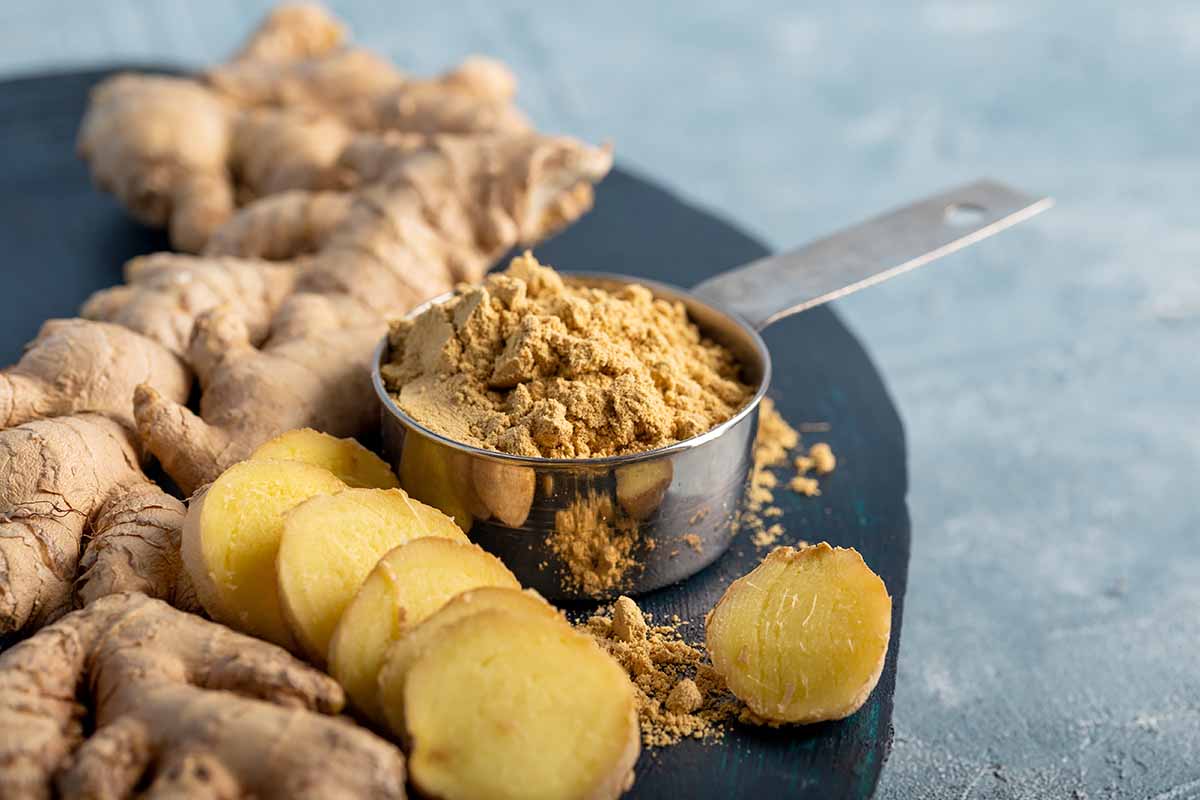
Bay leaves are an interesting subject — thanks for your concise summary. I have a tree growing in a container in my backyard so have a ready supply of fresh leaves (and, living in the San Francisco area, have access to California Bay Leaves, but have never tried them).
I ran across a fun piece of bay laurel history while watching a documentary called “Secrets of Ancient Rome” on Netflix that alternates between educational, cheesy, and cringe-worthy.
Livia, the wife of Octavian (later Emperor Augustus), was given a ‘gift’ of a laurel-sprig-bearing chicken by an eagle. The chicken led a long life and the sprig of laurel grew into a tree. Here’s the story from “The Empresses of Rome,” by Joseph McCabe (1911, available on Google Books).
“[During the civil war that followed Caesar’s assassination] Livia followed the struggle anxiously from her country villa a few miles from Rome. Sextus Pompeius was experienced in naval warfare and as repeated messages came of blunder and defeat on the part of Octavian’s forces she trembled with alarm. Her confidence was restored by one of the abundant miracles of the time. An eagle one day swooped down on a chicken which had just picked up a sprig of laurel in the farm yard. The eagle clumsily dropped the chicken with the laurel near Livia and so plain an omen could not be misinterpreted. Rumour soon had it that the eagle had laid the laurel bearing chick gently at Livia’s feet. As in all such cases the sceptic of a later generation was silenced with material proof. The chicken became the mother of a brood which for many years spread the repute of the village through southern Italy. The sprig of laurel became a tree and in time furnished the auspicious twigs of which the crowns of triumphing generals were woven.”
Love the story Marc, thanks for sharing!
A few years ago I purchased a bay laurel on the internet. My tree came in a box about three feet tall. After some more research I found it was probably a California laurel and read that a laurel from Oregon was the more suitable for cooking. Unable to find an Oregon laurel I gave up. Now after reading your article I am wondering how tell to tell if I have a true sweet Laurel or not. If not where can I find one?
Thank you
Thanks for your message, Terry. Once I bought a few fresh branches of the California variety at a farmers market, and was surprised by the pungent flavor! For more tips on growing this plant at home and where to find plants, there is a guide to growing bay laurel on our sister site, Gardener’s Path. Please give it a read!